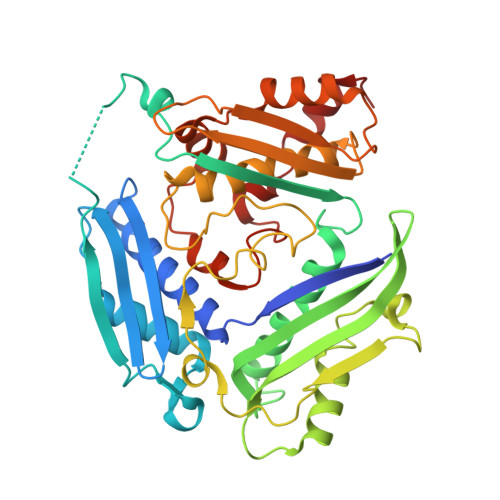Substrate Dynamics Contribute to Enzymatic Specificity in Human and Bacterial Methionine Adenosyltransferases.
Gade, M., Tan, L.L., Damry, A.M., Sandhu, M., Brock, J.S., Delaney, A., Villar-Briones, A., Jackson, C.J., Laurino, P.(2021) JACS Au 1: 2349-2360
- PubMed: 34977903
- DOI: https://doi.org/10.1021/jacsau.1c00464
- Primary Citation of Related Structures:
7LL3, 7LNH, 7LNN, 7LO2, 7LOO, 7LOW, 7LOZ - PubMed Abstract:
Protein conformational changes can facilitate the binding of noncognate substrates and underlying promiscuous activities. However, the contribution of substrate conformational dynamics to this process is comparatively poorly understood. Here, we analyze human (hMAT2A) and Escherichia coli (eMAT) methionine adenosyltransferases that have identical active sites but different substrate specificity. In the promiscuous hMAT2A, noncognate substrates bind in a stable conformation to allow catalysis. In contrast, noncognate substrates sample stable productive binding modes less frequently in eMAT owing to altered mobility in the enzyme active site. Different cellular concentrations of substrates likely drove the evolutionary divergence of substrate specificity in these orthologues. The observation of catalytic promiscuity in hMAT2A led to the detection of a new human metabolite, methyl thioguanosine, that is produced at elevated levels in a cancer cell line. This work establishes that identical active sites can result in different substrate specificity owing to the effects of substrate and enzyme dynamics.
Organizational Affiliation:
Protein Engineering and Evolution Unit, Okinawa Institute of Science and Technology Graduate University, 1919-1 Tancha, Onna 904-0495, Okinawa, Japan.


















